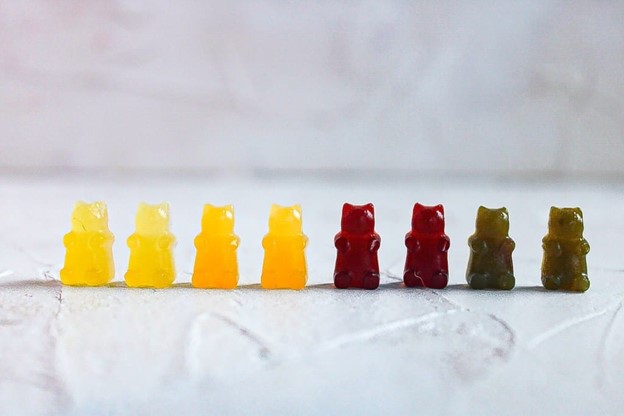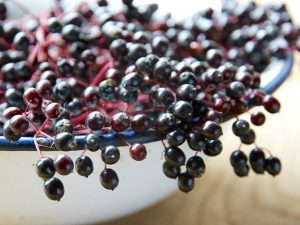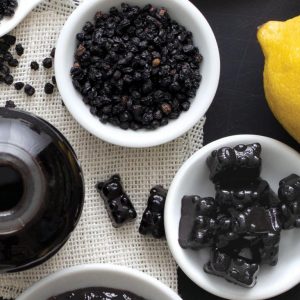Gummy worms, arguably one of the tastiest candies, are delicious due to their composition of sugar, gelatin, and food coloring. These three items are virtually always present in domestic kitchens. The preparation of these delightful delicacies is straightforward. However, there are techniques to improve the overall texture and quality of gummy worms using common kitchen equipment, even if they were not homemade.
Gummy worms, like other modern candies, are mass-produced in an automated factory on a quasi-assembly line. The gummies are produced by extruding a clear gum base through a specific mold, which is then heated to mold the Gummies into the “body” of a worm. The colorful gummies are placed onto the prefabricated foundation using a robotic arm and small syringes.
The present production of gummy worms arose from the wholesale industry’s mass production of gummies. To attempt to comprehend the dynamics of a process and why gummy worms are manufactured, let’s examine the history and development of this incredibly important delicacy.
Making gummy worms at home is simple, but you may not be able to control the flavor. A gummy worm factory will employ professional-grade equipment and recipes to manufacture the confection. After combining raw components, the factory will whisk them into syrup. Then, food coloring and seasoning will be added to the mixture to create a tasty treat.
Artificial and natural flavors
Depending on the manufacturer, artificial and natural flavors in gummy worm candies might differ significantly. Those with a higher natural flavor threshold are more likely to find and purchase the product. It may be challenging for consumers with low natural flavor thresholds to distinguish gummy candies. This post will outline some considerations for selecting gummy candy.
To determine the efficacy of these taste enhancers, consumers were asked to rate the food’s components. Specifically, respondents were asked how often they consumed meals with a particular color. Additionally, they were questioned if they paid attention to the color of labels and if they were aware of the ingredient. In addition, consumers were asked how likely they are to purchase a certain food if it contained both artificial and natural flavors.
Manufacturing procedure
The production of gummy worms involves the use of packaging equipment to create 250-gram containers of worm candy. Frequently, manufacturers alter the ratios of sugar, maize starch, and flavor to make the worms tastier.
The gelatinous materials are initially placed in a hot kettle. Water temperature is crucial since it impacts the uniformity of the final product. Following this, the slurry is moved to a storage tank. Then, finishing ingredients are added, such as citric acid. As soon as the slurry reaches the desired consistency, it is transferred to a depositor and deposited into molds. The molds are oiled beforehand to prevent sticking.
The final product is shaped using a Mogul starch molding machine. In the process of manufacturing gummy candies, it automates several processes. During the process of molding, the candy is placed on starch trays that are let cool overnight. The trays are then transferred to a sieve, where a vibrating metal screen filters out extra starch. After completion, they are chilled and prepared for packaging.
Transfer to Starch Molding Machine
The utilization of a starch molding machine is widespread among confectionery manufacturers. These machines are capable of executing a variety of activities, including compounding and transferring while assuring the best quality of the final output. The method of molding gummy candies involves the usage of starch, a crucial component of the candies. In addition to keeping the candies in place during the drying and cooling process, starch absorbs excess moisture.
The starch level should be two to six millimeters below the top edge of the tray to initiate the procedure. This prevents extra starch from escaping while handling. The starch level is then transferred to the station, where it can be formed into various shapes and sizes. Alternately, the level of starch can be controlled through the vertical actuator mechanism.
Quality Control for Gummy Worms
A factory that produces gummy worms must use quality control procedures to ensure product uniformity. The first step in quality control is the examination of incoming raw materials. In a quality control laboratory, raw materials are evaluated to assess their quality. During the testing procedure, the properties of solids and liquids, as well as their appearance and odor, are evaluated. The comparison of these measurements to the company’s criteria ensures that the candy satisfies the quality level.
After mixing the raw elements, the completed product is compounded. The factory worker puts the necessary number of components into the big tank with heating and cooling capabilities that serves as the main mixing container. This procedure typically takes one or two hours. The compounded gummy candy is then delivered to the Quality Control laboratory for testing. Inspectors from the FDA analyze the final product for contaminants, color, and texture.
Storage of Gummy Worms
The method for producing gummy worms is comparable to the current method. The artist uses a small plaster cast to carve the character into the candy. Ingredients are blended and heated before the addition of flavors. The liquid is then poured into the molds, allowed to cure for five days, then covered with beeswax. The covering keeps the worms moist without making them sticky.
The gelatin in gummy worms is derived from animal skin and bones. Some speculations consuming gummy worms could lead to the spread of mad cow disease. Its use in candy is safe, and gummy worms are a delectable treat for the whole family. Although the production process involves multiple processes, factory employees should be trained to handle them with care.
 Commercial Gummy Formulation Support
Commercial Gummy Formulation Support








